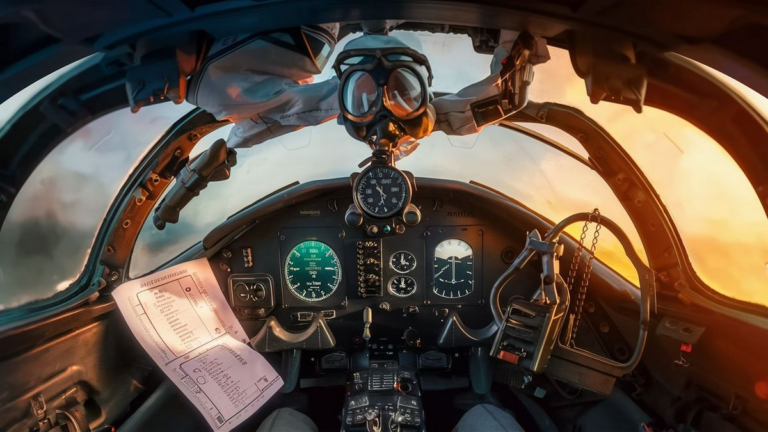When flying at high altitudes, such as 15,000 feet, oxygen becomes a critical consideration for pilots and passengers alike. In an unpressurized aircraft, where the cabin is not sealed off from the external atmosphere, the decrease in air pressure with altitude can lead to reduced oxygen levels inside the cabin. This can potentially result in hypoxia, a condition where the body is deprived of adequate oxygen supply.
The Importance of Oxygen
Oxygen is essential for human survival, particularly in environments where the air pressure is low, such as at high altitudes. At 15,000 feet, the air pressure is significantly lower compared to sea level, which means there is less oxygen available for breathing. Without supplemental oxygen, individuals may experience symptoms of hypoxia, including dizziness, shortness of breath, confusion, and even loss of consciousness.
Regulatory Requirements
Aviation regulatory bodies, such as the Federal Aviation Administration (FAA) in the United States, have established guidelines regarding the use of supplemental oxygen in unpressurized aircraft. These regulations are designed to ensure the safety of pilots and passengers during flight.
Pilot Requirements
Pilots are required to use supplemental oxygen when flying at altitudes above certain thresholds, typically around 12,500 feet to 14,000 feet, depending on the jurisdiction. This requirement is in place to mitigate the risk of hypoxia and ensure that pilots remain alert and capable of safely operating the aircraft.
Passenger Requirements
For passengers, the oxygen requirement may vary depending on factors such as the duration of the flight and individual health considerations. In some cases, passengers may be provided with supplemental oxygen masks or systems to use in the event of cabin depressurization or other emergencies.
Factors Affecting Oxygen Requirement
Several factors can influence the need for supplemental oxygen in unpressurized aircraft at 15,000 feet:
- Altitude: As altitude increases, the air pressure decreases, leading to lower oxygen levels.
- Duration of Flight: Longer flights at high altitudes may necessitate more oxygen supplementation to maintain safe oxygen levels.
- Physical Condition: Individuals with pre-existing medical conditions or poor cardiovascular health may require additional oxygen support.
Oxygen Delivery Systems
Aircraft are equipped with various oxygen delivery systems to ensure that both pilots and passengers have access to supplemental oxygen when needed:
- Portable Oxygen Systems: These are typically carried by pilots and can be used in the event of an emergency or if oxygen levels in the cabin become dangerously low.
- Oxygen Masks: Passengers may be provided with oxygen masks connected to the aircraft’s oxygen supply in case of cabin depressurization.
- Onboard Oxygen Generators: Some aircraft are equipped with onboard oxygen generators that can produce oxygen from chemical reactions, providing a continuous supply of supplemental oxygen during flight.
Ensuring adequate oxygen supply is essential for safe flight operations in unpressurized aircraft, especially at high altitudes like 15,000 feet. Pilots and passengers must be aware of regulatory requirements and factors influencing oxygen needs to mitigate the risk of hypoxia and ensure a smooth and safe flying experience.
Frequently Asked Questions
Below are some common questions related to oxygen requirements for unpressurized aircraft at 15,000 feet:
| Question | Answer |
|---|---|
| 1. What is hypoxia? | Hypoxia is a condition where the body is deprived of adequate oxygen supply, often occurring at high altitudes due to reduced air pressure. |
| 2. How does altitude affect oxygen levels? | As altitude increases, air pressure decreases, leading to lower oxygen levels, which can necessitate supplemental oxygen for individuals. |
| 3. What are the symptoms of hypoxia? | Symptoms of hypoxia include dizziness, shortness of breath, confusion, and potentially loss of consciousness. |
| 4. What are the regulatory requirements for pilots regarding oxygen? | Pilots are typically required to use supplemental oxygen when flying at altitudes above certain thresholds, as specified by aviation regulatory bodies. |
| 5. How do onboard oxygen generators work? | Onboard oxygen generators produce oxygen through chemical reactions, providing a continuous supply of supplemental oxygen during flight. |
Additional Considerations
Aside from regulatory requirements and oxygen delivery systems, there are other factors to consider when addressing oxygen needs in unpressurized aircraft:
- Weather Conditions: Extreme weather conditions, such as storms or turbulence, can impact oxygen levels and flight safety.
- Emergency Procedures: Pilots and crew should be trained in emergency procedures related to oxygen use and cabin depressurization.
- Altitude Restrictions: Certain aircraft may have altitude restrictions based on their design and equipment capabilities.
See also:






